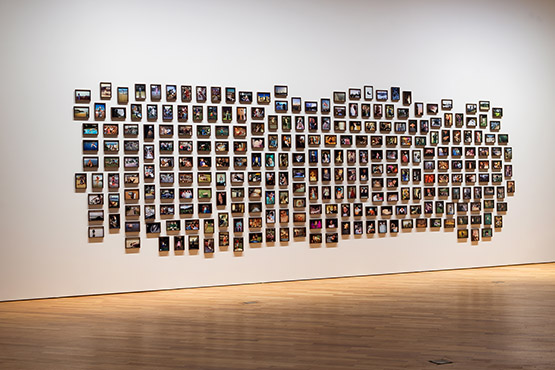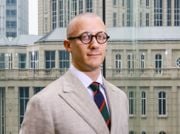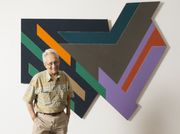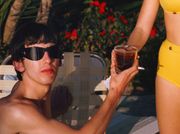Fiona Tan
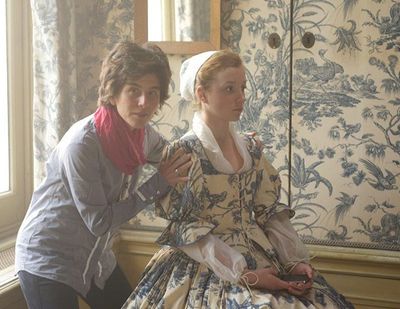
Known for her poignant and intimate filmic explorations, Indonesian-born Australian-raised artist Fiona Tan is currently holding a solo exhibition entitled Geography of Time
at the Museum of Contemporary Art in Oslo. Curated by Eva Klerck Gange, this mid-career exhibition is the first of a four-part touring exhibition that will travel to Mudam Luxembourg, MMK Museum für Moderne Kunst Frankfurt am Main and the Tel Aviv Museum of Art. The show brings together a range of Tan’s projects that share conceptual underpinnings and focus on the notion of portraiture.
The Amsterdam-based artist’s string of professional accolades is impressive. She has exhibited internationally at major institutions such as the Stedelijk Museum, Amsterdam and the Tate Modern, London, has represented the Netherlands in the Dutch Pavilion at the 53rd Venice Biennale (2009) and she was selected to participate in Documenta XI (2002).
Often exploring narrative based stories within her films and photographs, Tan’s practice aims to make the temporal tangible. Many of her works to date centre around historical archives, the relationship between image and text, and ideas of existence and change that focus on a visible or invisible protagonist.
Rachael Vance spoke to Tan about her exhibition in Oslo and her professional foray into the world of feature-length films.
Fiona, your practice is known for presenting audiences with intimate encounters and often unguarded moments. In your exhibition Geography of Time, your time-lapse work Diptych, 2006-11, is included. This work presents a strong sense of voyeurism.
I have done quite a few works over the years where I film people in a photographic way—where they are not doing anything and are sometimes quite uncomfortable with the camera. It allows the viewer to engage with someone’s appearance in a way that you don’t do in real life, because you never stare at someone like that.Image: Fiona Tan, Future geography. Installation photographs, Nasjonalmuseet, 2015. Photo: Nasjonalmuseet / Børre Høstland.
Diptych was filmed over a long period of time. You shot fifteen pairs of identical twins in the same location every year on the island of Gotland. In the show the work is made up of four synchronised silent colour projections of vertical portraits.
I wanted to engage in a longer term piece and it combines my interest in twins. This piece is very accumulative. It is a work that requires time to engage with and allow the images to flow over you. What you are watching is time passing, or not passing, depending on how you want to look at it. Every year I went to great lengths to try and film the same shot again. The installation is made up of two identical mirrored rooms, and in each room there are two screens hanging. These projections are also synchronised accordingly across both rooms. When you are standing in the room to the right watching a girl, her sister is being projected at the same time in the left-hand room. The two screens present two shots of the same person, thus becoming in some way twins with themselves.I often wonder what it is like to be a twin.
It is fascinating, twins live in a different world. It is something they will only know, they know, we don’t. They try to explain it to us.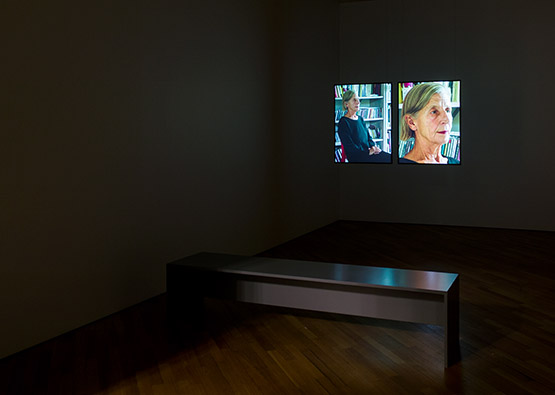
Image: Fiona Tan, Future geography. Installation photographs, Nasjonalmuseet, 2015. Photo: Nasjonalmuseet / Børre Høstland.
What were the subject’s reactions to the work?
I built up quite a nice relationship and rapport with them over the years. I didn’t see them for very long each visit because I was rushing around the island making sure I filmed everyone. There was this running joke — ‘see you again next year’ —every time I left. It was really lovely, and I did start bringing them DVDs the last time I was there, showing them all the footage so they could see it themselves.It’s a really fascinating family album for them and such a unique project.
We had a party at the end where we invited everyone so all the twins met each other. It was lovely to be able to do it. It was a really good thing to be able to be involved in. It was also about revisiting a sense of place each time I went back.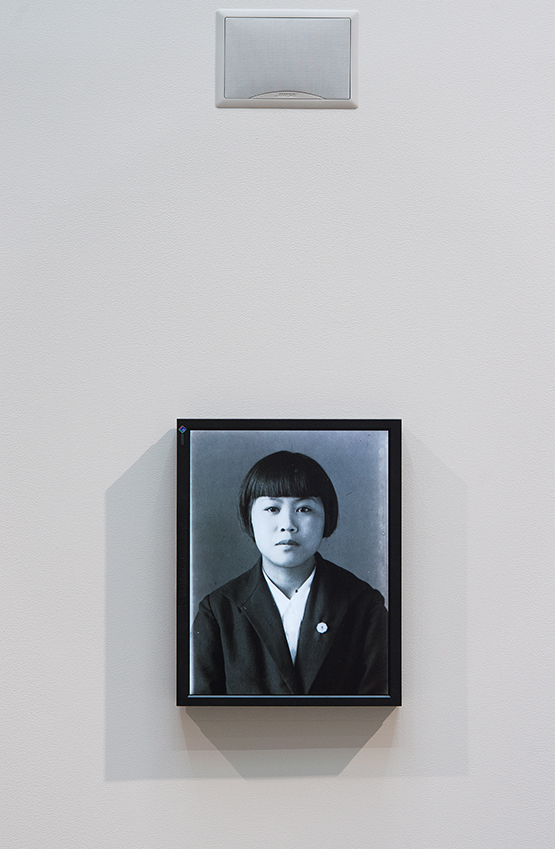
Image: Fiona Tan, Future geography. Installation photographs, Nasjonalmuseet, 2015. Photo: Nasjonalmuseet / Børre Høstland.
One of your most recent works included in the exhibition is the film Nellie, 2013. Enlivening an historical story, the film is inspired by the life of Cornelia van Rijn, Rembrandt’s illegitimate daughter, who emigrated to Batavia (present-day Jakarta). You recreated her biography by filming a similarly-aged girl dressed in clothing from the seventeenth century.
Nellie came out of my research for another work also in the exhibition, Provenance. The piece also aimed to make a connection between film and painting. This was something I did for the Rijksmuseum here in Amsterdam, which is also in their collection. For this work, I conducted research in their depot. During my research I couldn’t avoid Rembrandt, and this is when I came across the fact that he had one daughter who survived him. The thing that really got me interested about her, which is the seed for Nellie, is the fact that this girl seems to be forgotten in the history books. She migrated to Indonesia when she was 15.This explains the reference to a colonial-style backdrop in Nellie, and also the specific costume the actress is wearing.
Nellie is filmed in an historical building in the centre of Amsterdam, with a very distinct textile pattern on the walls. That was also a reason to pretend this room was in Indonesia. I tried to imagine what her life would be like in Batavia, in [a] closed off colony. For me, the work is an homage to a forgotten woman. The process of getting a costume made was very interesting. I worked with a fantastic dressmaker who was an expert in seventeenth century costumes.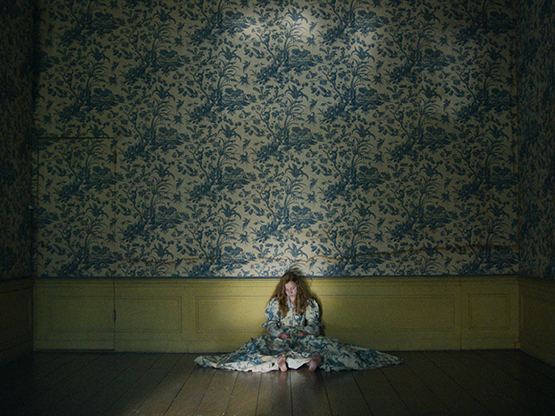
Image: Fiona Tan, Nellie, video installation, 2013. Courtesy the artist and Frith Street Gallery, London. Stillbilde: © F.Tan.
Your seminal work A Lapse of Memory, 2007, which was also exhibited at the Venice Biennale in 2009, is included in the exhibition at The Museum of Contemporary Art in Oslo. This was your first experience in the role of director, working with a professional actor. Here, the role of memory and forgetting in the construction of cultural heritage is tackled via a male protagonist suffering from dementia.
The work was filmed at the Royal Pavilion in Brighton, which is this amazing 200-year-old chinoiserie building. From the moment of seeing the building for the first time, I invented a character that was living inside the building. I realised later he became a personification of the building. In the voice-over that I wrote I mention ‘He feels more real to me than the rooms which he occupies’, which is an interesting reversal because I was trying to deal with it filmically.Casting an actor was a new thing for me. Since then I have completed a feature film, and I am now somewhat more familiar with it [casting]. I spent quite a lot of time looking for the right person. Someone who looked like you felt they had come from a good background and fallen on hard times. I kept coming back to Johan Leysen, who is a great Belgian actor who lives and works in France.
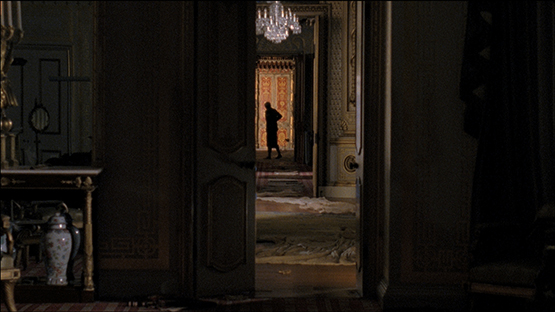 Image: Fiona Tan, Lapse of Memory, 2007. Courtesy the artist and Frith Street Gallery, London. Installasjonsfoto: © F.Tan.
Image: Fiona Tan, Lapse of Memory, 2007. Courtesy the artist and Frith Street Gallery, London. Installasjonsfoto: © F.Tan.
Do you consider yourself as a filmmaker or an artist?
I see myself as an artist who works with film and photography. I am just about to enter into a new chapter, and I have just completed a feature-length film for cinema that’s coming out early next year called History’s Future. For me, the making of the feature film is a site-specific project that is a different situation than the spatial, sculptural installations that I usually make in the exhibitions that I work with. It’s just a completely different ball game, also economically. There are different rules, and there are also different possibilities. Therefore I am not going to show this film inside a gallery. I might show it in an auditorium because that is a similar setting to the cinema, but I am not going to show it where you have to stand up for 90 minutes.‘Geography of Time’ is currently exhibited at The Museum of Contemporary Art, Oslo until 31 January 2016. It will then travel to Mudam Luxembourg, MMK Museum für Moderne Kunst Frankfurt am Main and Tel Aviv Museum of Art. —[O]

